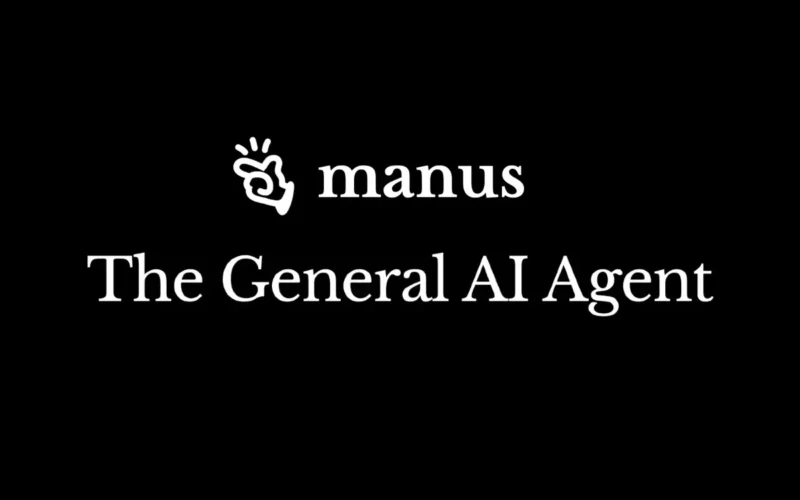The launch of China’s Manus AI agent is being celebrated as the “second DeepSeek moment.” Unlike specialized AI agents, Manus is a versatile, general-purpose AI capable of handling a wide array of tasks. If you’re wondering how Manus AI operates and who the minds behind it are, you’re in the right place. Dive into this comprehensive guide to explore the workings of Manus AI, its underlying technologies, and more.
What is China’s Manus AI Agent?
Manus is a general-purpose AI agent capable of autonomously browsing the web, executing code, and interacting with computers to accomplish a diverse range of tasks. It has been developed by a Chinese company named Butterfly Effect, headquartered in Wuhan.
Butterfly Effect is a relatively small firm with just a few dozen employees, operating out of offices in Wuhan and Beijing. At present, Manus AI is in a closed beta phase and is accessible only through invitation.
What sets Manus apart is its ability to integrate multiple tools into a single, seamless workflow. For instance, OpenAI’s Operator agent is designed to interact with cloud computers, but it exists as a standalone product. Similarly, OpenAI’s Deep Research agent can browse the web to produce detailed reports, yet it too operates as a separate tool.
Manus AI, on the other hand, combines these functionalities into one versatile “general” AI agent. It can perform in-depth web research, gather information, create detailed plans, operate a computer, and execute code in an isolated environment all within a unified system.
While OpenAI has hinted that GPT-5 will aim to unify ChatGPT’s tools into a single AI system, China’s Manus AI has already taken the lead in this direction, achieving this integration ahead of ChatGPT.
What Drives the Manus General AI Agent?
This raises the question: what powers the Manus general AI agent? According to Yichao ‘Peak’ Ji, Manus’ chief scientist, the system leverages Anthropic’s Claude 3.5 Sonnet model and several fine-tuned versions of Alibaba’s Qwen models.
Additionally, Manus utilizes the open-source Browser Use AI agent (available on GitHub) to interact with websites through a web browser. Reports also suggest that Manus has access to 29 distinct tools, enhancing its versatility.
Internally, Manus is testing Anthropic’s latest Claude 3.7 Sonnet unified model, which is expected to further enhance the agent’s capabilities. Furthermore, Reuters has reported that Manus has partnered with Alibaba’s Qwen team to expand and refine its general AI agent.
What Can Manus AI Agent Do?
Although the Manus AI agent is not yet publicly accessible, the company has outlined several potential use cases on its website. These include booking flight tickets, reserving restaurant tables, analyzing stocks and company earnings reports, performing data analysis, and more. Additionally, Manus can sift through resumes, analyze files, and generate detailed reports with candidate profiles and ranking suggestions.

Users can also download files in Excel or Word formats directly to their local computers. Notably, the Manus AI agent operates within its own computer environment, where it can preview files, interact with them, browse the web, execute Python code, and perform other tasks. It breaks down complex tasks into smaller steps and uses the web to complete them sequentially.
You can monitor the agent’s actions in real time and step in if it makes a misstep. Once the task is completed, you’ll receive a notification on your computer or smartphone.
Manus AI Benchmark Performance
The Manus AI agent has been tested on GAIA (General AI Assistants), a rigorous benchmark designed to evaluate AI agents on their ability to solve real-world problems. This benchmark “assesses essential skills such as reasoning, multi-modality handling, web browsing, and proficiency in using tools.”

On GAIA, Manus achieved an impressive score of 86.5% in Level 1 tasks, surpassing OpenAI’s Deep Research agent, which scored 74.3%. For context, humans typically score around 92% on GAIA tasks. Manus also outperformed OpenAI’s Deep Research agent in Level 2 and Level 3 tasks, demonstrating its advanced capabilities.
Overall, the Manus general AI agent represents a significant step forward in the evolution of agentic AI. While some of the excitement surrounding it may be exaggerated, the Manus team has successfully integrated a wide array of tools into a cohesive system. It’s important to note that Manus is still in closed beta, and the team has promised substantial improvements before its public release. With Manus, OpenAI now faces a new competitor in the AI agent space, alongside DeepSeek—both of which originate from China.




